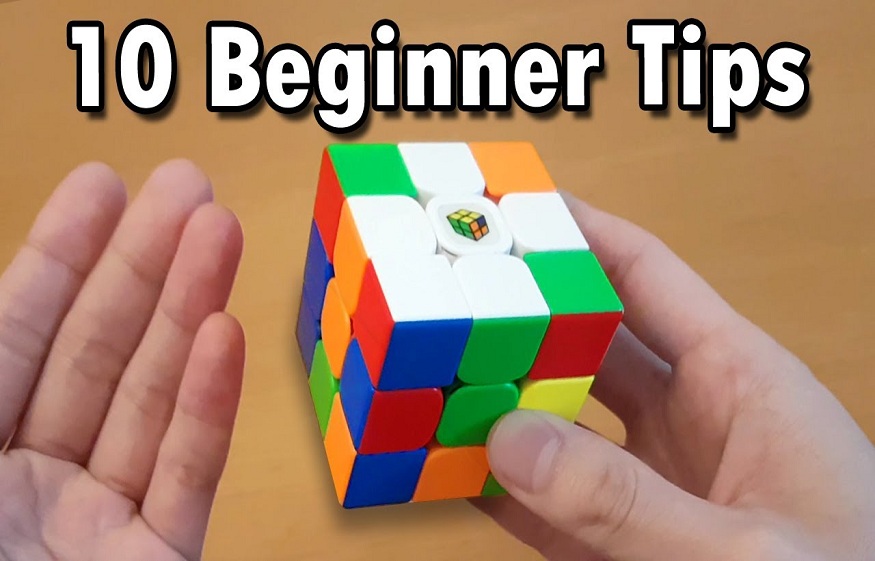Learning to solve Rubik’s cube is one thing and solving it at an electrifying speed is another thing. When you learn to solve the cube, you focus on understanding the method and the algorithm. However, speedcubing is majorly the game of muscle memory.
Are you ready to dive into the exciting world of speedcubing? Whether you’re just starting or looking to shave seconds off your solve time, speedcubing is as thrilling as it is challenging. There’s a method, a rhythm, and a skill set to master, and even beginners can make big strides with the right techniques. Here’s a list of 10 practical and beginner-friendly tips to speed up your solves and bring you closer to those sub-20-second solves!
1. Master the CFOP Method
The CFOP method (Cross, F2L, OLL, PLL) is one of the most popular solving methods among speedcubers. It’s beginner-friendly, yet powerful enough to take you to advanced levels. Start by mastering the cross (solving the white cross on the first layer), then learn how to pair pieces in the First Two Layers (F2L). Gradually, you can add Orientation of the Last Layer (OLL) and Permutation of the Last Layer (PLL). Learning CFOP might seem overwhelming at first, but take it one step at a time. It’s the foundation for most speedcubers, and mastering it will set you up for success! So, first thing first, learn how to solve Rubik’s cube.
2. Practice Finger Tricks
Finger tricks are crucial in speedcubing. Instead of moving the whole hand, finger tricks allow you to make turns with minimal movement. Try U moves with your index finger or D moves with your ring finger; these tricks make moves faster and smoother. Practice these simple moves until they’re second nature. As you improve, learn more advanced finger tricks for other moves. Finger tricks save time and make your solves feel more fluid and less jerky.
3. Learn Efficient Cross Solving
The cross is the foundation of every CFOP solve, and it’s where you can save or lose a lot of time. Practice solving the cross in under 8 moves and try planning it during the inspection time. Use your inspection period to visualize the entire cross, so when the timer starts, you can execute it without hesitation. Keep practicing different cross positions and experiment with fewer moves to get it down to an instinct.
4. Memorize Key Algorithms
Algorithms are the heart of speedcubing. Start by learning the essential algorithms for OLL and PLL steps. You don’t have to learn all of them right away; begin with the most common ones, then slowly expand. Practicing algorithms daily helps them become second nature. The more comfortable you are with these algorithms, the smoother and faster your solves will be. Make sure to drill each algorithm until you can perform them without looking or pausing.
5. Focus on Lookahead
“Lookahead” means solving one part of the cube while already planning the next moves. It’s a skill that takes time to develop but is a game-changer for speedcubers. During F2L, for example, try to see the next pair while solving the current one. Start by slowing down a bit and try to observe the cube without taking breaks between moves. This skill helps reduce pauses, making your solves flow better and look smoother.
6. Time Your Solves Regularly
Timed practice is essential. Use a timer app or an online timer to track your average solve time. By timing yourself, you can see where you’re improving and where you need more practice. Focus on both single solves and averages of 5, 12, or 100 solves. Averages give a more accurate picture of your progress and can highlight areas where you’re consistently slow.
7. Work on F2L Efficiency
F2L (First Two Layers) is a big part of CFOP and can be a huge time sink if not practiced well. Start by solving F2L intuitively—find ways to pair corner and edge pieces and insert them into the right slots efficiently. Practice different F2L cases and figure out the moves that work best for you. As you get more comfortable, start experimenting with advanced F2L techniques that reduce unnecessary rotations or moves.
8. Find a Good Teacher and Start Learning
Yes. There’s a wealth of content on speedcubing on YouTube and other social media platforms. Watching tutorials or solving videos can help you pick up tips and tricks from experienced cubers. But then it involves a lot of trial and error that leads to a waste of time. Repeated failure will eventually make you feel frustrated and quit cubing altogether. A much better option is to get trained by an expert. You can explore Rubik’s Cube Classes Online.
9. Join a Cubing Community
Cubing isn’t just about solving alone! Joining a community, whether online or in person, can be hugely beneficial. Social media groups and local cubing clubs can also introduce you to other speedcubers, allow you to compete, and learn from one another. The community is welcoming, and sharing your journey with others can make cubing even more enjoyable.
10. Take Care of Your Cube
A well-maintained cube can make a big difference in your speed. Regularly clean your cube, adjust the tension if it feels too loose or tight, and lubricate it for smooth turns. Different cubers prefer different setups, so experiment until you find what feels right. A well-tuned cube will allow you to execute moves faster and with less resistance, which can make those finger tricks even easier to execute!
Final Thoughts
Speedcubing is an exciting journey, and there’s always something new to learn. Start by mastering the basics—CFOP, finger tricks, cross efficiency, and basic algorithms. With consistent practice and a bit of patience, you’ll see your times improve and you would be able to solve all types of rubik’s cube. Remember, every speedcuber started at the beginning, so enjoy the process, stay motivated, and keep challenging yourself. Good luck, and happy cubing!
